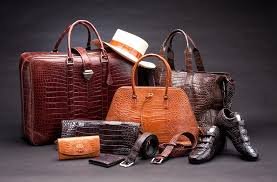Luxury Goods are high-end products that offer superior quality, exclusivity, and craftsmanship. These goods are often associated with prestige, status, and opulence, and typically come with a premium price tag due to their brand value, rarity, and exceptional materials.

Key Characteristics of Luxury Goods:
- Premium Quality: Luxury goods are crafted from superior materials and undergo meticulous attention to detail in their production.
- Exclusivity: They are often produced in limited quantities or are customized to provide a unique experience for the buyer.
- High Price Point: The cost of luxury goods is typically higher than ordinary consumer goods, reflecting their rarity, brand prestige, and quality.
- Brand Heritage: Many luxury brands have a long history and a reputation for excellence, often passed down through generations.
- Aesthetic Appeal: Luxury items are designed with high visual appeal and are meant to be beautiful as well as functional.
Categories of Luxury Goods:
- Fashion and Apparel:
- High-end clothing, shoes, and accessories from brands like Chanel, Gucci, and Louis Vuitton.
- Includes bespoke items such as tailored suits and limited-edition shoes.
- Jewelry and Watches:
- Precious metals, diamonds, and gemstones crafted into exquisite designs (e.g., Rolex watches, Cartier jewelry).
- Often designed for exclusivity, with items passed down as heirlooms.
- Automobiles:
- Luxury vehicles with advanced features, performance, and design (e.g., Ferrari, Rolls-Royce, Bentley).
- Offers comfort, prestige, and unique driving experiences.
- Yachts and Private Jets:
- Custom-built yachts and private aircrafts designed for the ultra-wealthy.
- Represents status, comfort, and an exclusive lifestyle.
- Real Estate:
- Luxury properties such as penthouses, mansions, and estates in prime locations.
- Features like expansive layouts, advanced technology, and stunning architectural design.
- Art and Collectibles:
- Rare works of art, antiques, and collectibles such as fine wine, vintage cars, or rare stamps.
- These items are often seen as both an investment and a display of personal taste.
- Beauty and Fragrances:
- High-end skincare products, perfumes, and cosmetics from prestigious brands (e.g., La Mer, Tom Ford).
- These items are often associated with self-care and personal indulgence.
Why People Buy Luxury Goods:
- Social Status: Luxury goods are seen as a symbol of success and wealth, helping owners signal their social standing to others.
- Emotional Satisfaction: The emotional satisfaction of owning something exclusive or rare that not many people can access.
- Quality and Durability: Many luxury items are crafted to last, offering long-term value through superior quality and craftsmanship.
- Brand Loyalty: Consumers often develop a deep loyalty to certain luxury brands, feeling a connection to their heritage, craftsmanship, and values.
- Investment Potential: Some luxury items, particularly art, watches, and vintage cars, can appreciate in value over time, offering financial returns.
Luxury Goods Market Trends:
- E-commerce Growth: Increasingly, consumers are purchasing luxury items online, with brands enhancing their digital presence to cater to this demand.
- Sustainability: As environmental concerns rise, there is a growing trend toward sustainability within the luxury goods market, with brands offering eco-friendly and ethically sourced products.
- Experience Over Ownership: Younger generations, particularly millennials, are shifting toward purchasing luxury experiences (e.g., vacations, concerts, events) rather than physical goods.
- Emerging Markets: As wealth rises in developing countries, such as China, India, and the Middle East, the demand for luxury goods has grown significantly in these regions.
Challenges in the Luxury Goods Industry:
- Counterfeiting: The luxury market is plagued by counterfeit goods, which can damage brand reputation and consumer trust.
- Economic Downturns: Luxury goods tend to be more vulnerable during economic recessions as consumers reduce discretionary spending.
- Changing Consumer Preferences: The demand for luxury goods is influenced by shifting tastes and values, such as the desire for sustainable and socially responsible products.
- Brand Dilution: As luxury brands expand their market or collaborate with lower-tier brands, there is a risk of diluting their exclusivity and prestige.
Luxury Goods vs. Premium Goods:
While both luxury and premium goods are high-quality and priced higher than average products, luxury goods are generally characterized by their exclusivity, heritage, and emotional appeal, whereas premium goods focus more on high quality and superior performance without the same level of exclusivity or status.
Future of Luxury Goods:
- Digital Transformation: Luxury brands are increasingly embracing digital technologies, such as augmented reality (AR) and virtual reality (VR), to offer immersive shopping experiences.
- Sustainability Trends: There is an increasing shift toward ethical luxury, where consumers demand transparency in the production processes and seek out brands committed to reducing environmental impact.
- Increased Customization: More luxury brands are offering bespoke services, allowing customers to personalize their products, ensuring a one-of-a-kind ownership experience.